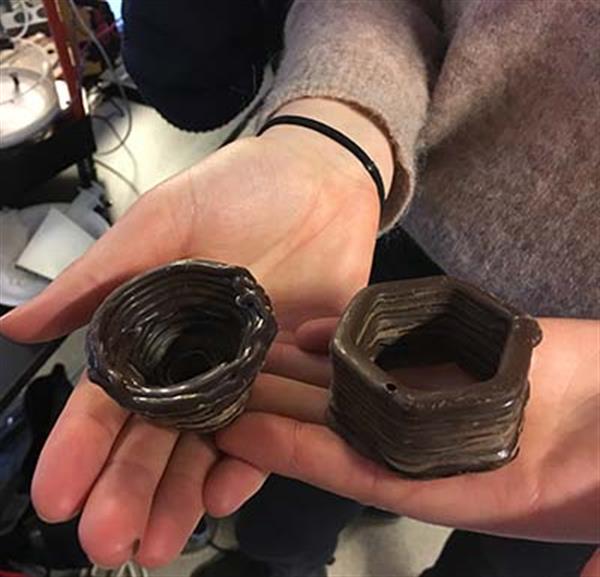- makeITcircular 2024 content launched – Part of Maker Faire Rome 2024Posted 2 weeks ago
- Application For Maker Faire Rome 2024: Deadline June 20thPosted 2 months ago
- Building a 3D Digital Clock with ArduinoPosted 7 months ago
- Creating a controller for Minecraft with realistic body movements using ArduinoPosted 7 months ago
- Snowflake with ArduinoPosted 8 months ago
- Holographic Christmas TreePosted 8 months ago
- Segstick: Build Your Own Self-Balancing Vehicle in Just 2 Days with ArduinoPosted 8 months ago
- ZSWatch: An Open-Source Smartwatch Project Based on the Zephyr Operating SystemPosted 9 months ago
- What is IoT and which devices to usePosted 9 months ago
- Maker Faire Rome Unveils Thrilling “Padel Smash Future” Pavilion for Sports EnthusiastsPosted 10 months ago
Developing a Chocolate Hydro 3D printer

Students at Lund University have faced an exciting technological challenge: developing proof-of-concept 3D printers that could print in chocolate fast.
Only after the first chocolate layer solidification the next layer can be printed on top of the first.
Fortunately, they weren’t working completely from scratch, as each team was given a low-cost 101Hero 3D printer to hack.
So one of those teams figured out that printing chocolate on cold water almost instantly solidified the chocolate: the Chocolate Hydro 3D printer was born for it.
The idea behind the chocolate 3D printer is to deposit a first layer of chocolate onto the bottom of a print bed container. Once that first layer is printed, the container is then flooded with cold water (up to the height of the chocolate). The water’s surface tension is meant to keep it from flowing over the chocolate while at the same time cooling the chocolate until it solidifies.
After the water, the second layer can be printed on top of the first layer, before more water is added, and so on and so forth.
The water-raising mechanism also varied from team to team: some relied on ultrasonic sensors to detect the water levels, while others attached wires to the print head that would automatically stop the water pump when they came into contact with water.
“As for all students, there was a steep learning curve in getting familiar with all the digital prototyping technologies they had at their disposal, ranging from CAD to 3D printing, laser and water jet cutting, CNC machining, Arduinos and Raspberry Pi’s, etc,” wrote Product Development professor Olaf Diegel on his blog.
Of course, as a proof-of-concept 3D printer, there are still a few kinks to be worked out, but the students will keep working on the chocolate 3D printing technology to improve layer thickness, accuracy, and more.!
Jump on 3ders.org to read the original post.
















